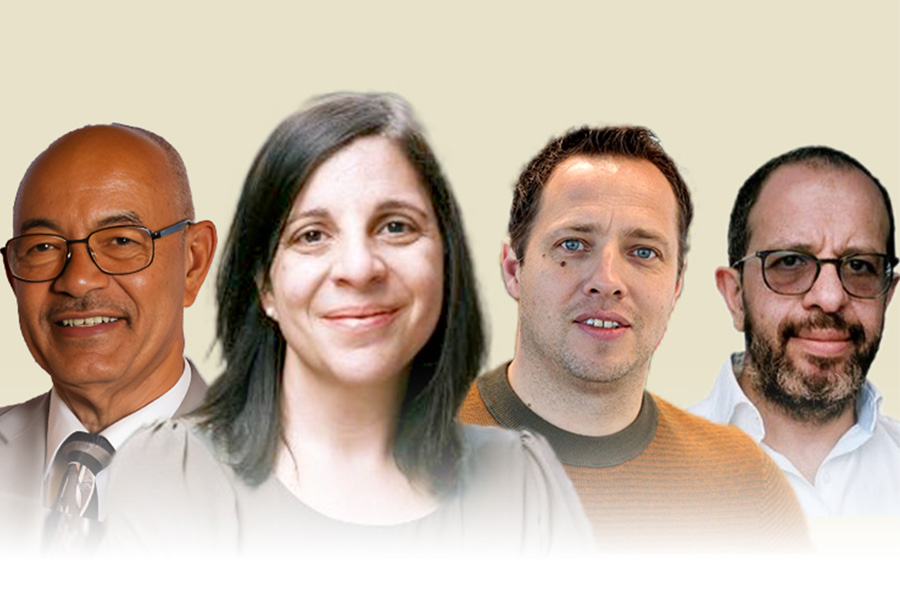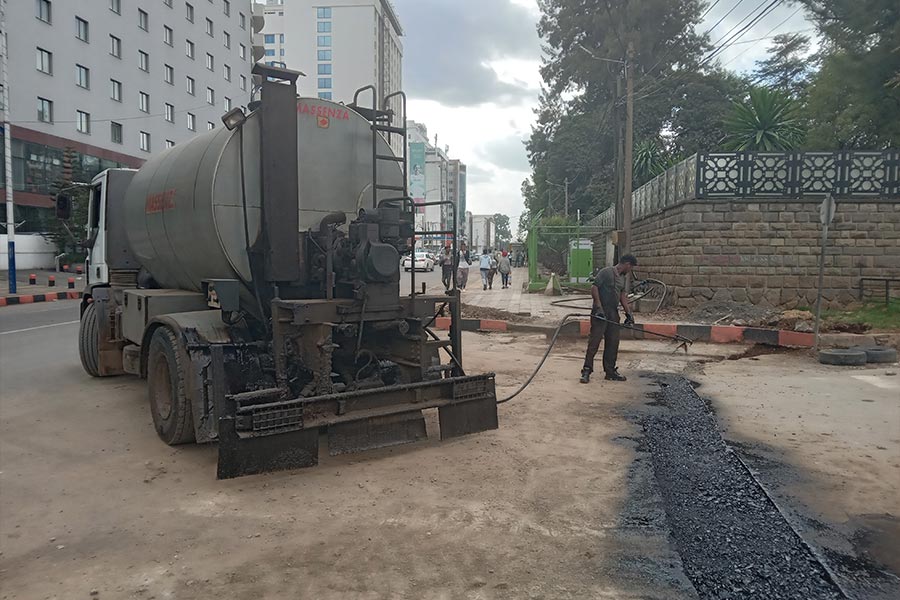
I was mourning the untimely demise of a relative in his early 50s, which triggered a profound grief and palpable devastation of his loved ones.
Realising that some things are irreversible unveils a heavy heart among his loved ones. But the mourners attained new conscious levels as they joined a collective mental journey in which the deceased started to be remembered not as a painful subject but cherished as a memory, that transcended to the unknown.
It was a moment of vulnerability when the heart's deepest sentiments were laid bare which led me to leave content and enlightened.
The mourning process, far from being a mere tribute to the departed, is a testament to the resilience of the human spirit. It is a collective healing journey where the living find solace in shared memories and forge unbreakable bonds- supporting the living and preparing them for the aftermath.
This sad period coincided with an acclaimed art exhibition at the Goethe Institute I had been tipped off.
Decades had passed since I had last set foot on the premises which had changed locations. However, I was determined to see the exhibition and eager to experience firsthand the stimulating artworks on display.
It has made my search seem like an eternity navigating with a tangled web of information. Finally, I reached a sign that reads "Goethe Institute, Kifle Wodajo Memorial Center for Peace, Human Rights and Democracy” around Sidist Kilo and decided to take a chance. The building, recently renovated and repurposed, was dedicated to the late renowned Ethiopian poet and painter GebreKristos Desta whose works are housed in the same facility.
I was immediately struck by the modern and minimalist design. The white walls and polished concrete floors reflected the natural light streaming through the large windows, creating an airy and inviting space.
I entered the exhibition dubbed “Wulo" which had a context purposed to demonstrate the practices of mourning. White shawls with upside-down embroidery that resembles mourning in the Ethiopian context greeted me.
The QR code-activated video on the proper folding of the shawl highlighted the need for two people, emphasising the importance of communal solidarity. It symbolised the collective effort required to support the bereaved. The delicacy of caring hands while folding the shawl was mentioned not only to signify what it takes to be compassionate to each other but also how fragile peaceful coexistence is. The neatly folded shawls are unfolded and used again, symbolising an untimely death which is an eventuality much dreaded and wished against.
In the next room dedicated to ‘Still objects’, commonly used in mourning scenarios were displayed while flickering lights alternated between light and darkness. The curative power of collective mourning and the role of Idir (the Ethiopian community's traditional association) as a coping mechanism cannot be overstated.
Idirs, own a variety of materials such as tents, chairs and cooking utensils that are used in the event of a death while members contribute to cover funeral, guest accommodation and catering expenses. These seemingly inanimate objects represent the community's solidarity in grieving, and the sombre mood during shared meals in honor of the deceased.
The corresponding soundtrack and footage from the QR code was accompanied by the sound of soft winds, birds chirping and owls cooing in the background. It suggests some meaning to life but also a creepy sense of the meaninglessness of life, perhaps reflecting the exhibitionist's intention to induce melancholia.
For me, the most immersive and sensational part was the pitch-black room, which I accidentally entered. The room had thick dark curtains and I pulled them apart to reveal a space.
The overwhelming darkness can be compared to the black hole in the universe, which possesses infinite gravitational power, capable of engulfing all matter, energy and light into its abyss. Soft whispering sounds added to the creepy atmosphere, making me feel like I was in a horror movie. Then I realized the sounds came from the speaker in the room playing soft monotone recordings of mourners' conversations; women's voices asking about the deceased's age, occupation, and cause of death were prominent. Unable to make out any visible objects I turned on my phone flashlight to see images of cravats against a dark background on one wall and lines of various shawls and towels on the opposite wall. These objects possibly represented a group of people from mourning houses. On the remaining sides of the room, chairs faced the walls instead of the centre of the room.
The effect was a vivid reminder of past mourning experiences and the universal human experience. Death takes away all energy and aspirations from life while transforming the deceased into nothingness. Its mystery remains impossible to decipher, similar to the black hole.
Then, a short film indicating that collective mourning is as good as half laughter follows.
It depicts research on physical gestures of mourning, professional weepers, delivering bad news to loved ones, and lamentations accompanied by the traditional instrument Washint which resembles the modern-day flute. The researchers theorise that this may help eradicate the communal conflicts and mistrust manifesting in modern society by building trust and understanding.
Finally, the dark and shadowy space explored historical injustices and the ghosts of the past. The researchers journeyed through time and space, retracing the steps of those who had been dispossessed and plundered while their spirits lingered in the places where they had suffered.
Though macabre and cryptic, the tour posed fundamental questions about humanity and the shared future. It was a call to bridge the gaps of misunderstanding and create a just world where all souls could find peace.
The realisation of the futility of life and powerlessness in the face of death was humbling and a necessary awakening, as we often ignore the reality of death and the uncertainty of life.
I left the exhibition with a heavy heart but also with a sense of hope. It reminded me that we are all connected, that our pain and suffering are shared and that we can create a better future for ourselves and future generations. It is a great feeling to find oneself in a position of sharing others’ burdens and pain the comfort of knowing we are not alone in our struggles. We discover the transformative power of unity and the immense healing potential of human connection.
Showing genuine condolence and joining others in grief is a miraculously cleansing and liberating process and the true path to lasting peace of mind. It paves the path to a peaceful future unhaunted by the ghosts and monsters of unresolved pain and bereavement.
PUBLISHED ON
Nov 11,2023 [ VOL
24 , NO
1228]


Fortune News | Sep 22,2024

Commentaries | May 31,2025

Sponsored Contents | Jun 15,2022

In-Picture | Feb 17,2024

Fortune News | Apr 03,2023

Dec 22 , 2024 . By TIZITA SHEWAFERAW
Charged with transforming colossal state-owned enterprises into modern and competitiv...

Aug 18 , 2024 . By AKSAH ITALO
Although predictable Yonas Zerihun's job in the ride-hailing service is not immune to...

Jul 28 , 2024 . By TIZITA SHEWAFERAW
Unhabitual, perhaps too many, Samuel Gebreyohannes, 38, used to occasionally enjoy a couple of beers at breakfast. However, he recently swit...

Jul 13 , 2024 . By AKSAH ITALO
Investors who rely on tractors, trucks, and field vehicles for commuting, transporting commodities, and f...

Jul 12 , 2025
Political leaders and their policy advisors often promise great leaps forward, yet th...

Jul 5 , 2025
Six years ago, Ethiopia was the darling of international liberal commentators. A year...

Jun 28 , 2025
Meseret Damtie, the assertive auditor general, has never been shy about naming names...

Jun 21 , 2025
A well-worn adage says, “Budget is not destiny, but it is direction.” Examining t...